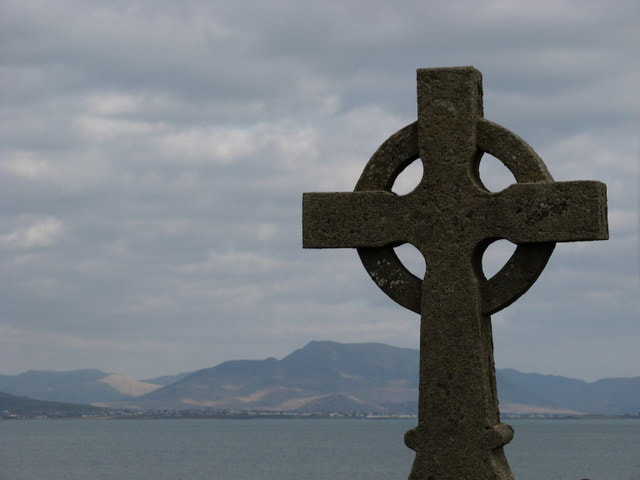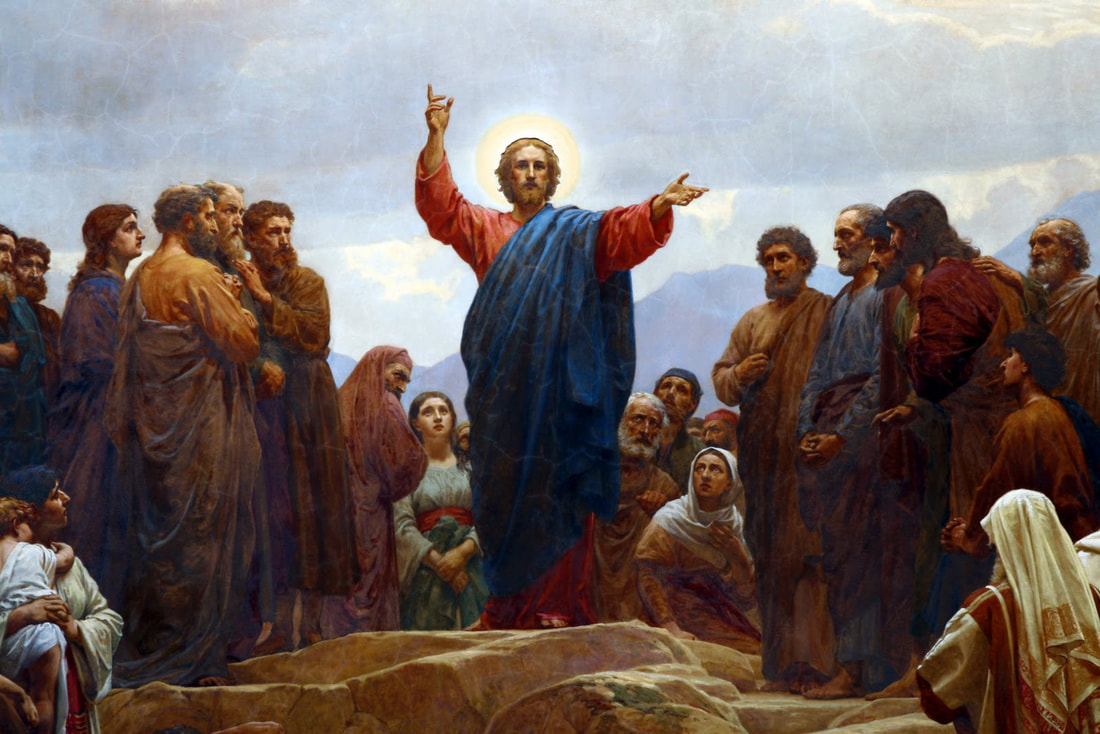“Go ye therefore, and teach all nations, baptizing them in the name of the Father, and of the Son, and of the Holy Ghost:” Matthew 28: 19
The Holy Celtic Church International views the sacrament of Holy Orders primarily as a path of personal initiation and spiritual development for the individual, not necessarily connected to any kind of public ministry, precedence for which approach can be seen in those monastic orders which have a high number of priests, whilist living the contemplative life. However, even the Carthusians have a public chapel, and so it is with us. For the spiritual life of clergy to be fruitful there must at least be a willingness to share the faith and to take any opportunity to serve the needs of laity who may come within our orbit.
Here at St Gall’s Retreat (otherwise "Bed & Breakfast Casa San Gallo") we do not push religion on our unsuspecting guests, a majority of whom are normally secularised Europeans, but each room has at least an icon or a crucifix, or both, and guests who see us on the way to or from the chapel and who ask questions may be invited to view the chapel or even attend the Mass or Divine Office. In this way we can at least provide an oppoprtunity for the the unchurched to reconsider their position. Who knows where that mustard seed might germinate and grow into a vibrant Christian life.
I think for all of our clergy, visibility is hugely important. Wearing a collar in public, or even more so a cassock or habit, provides an opening for laity to approach, ask questions, perhaps revise their negative assumptions of religious people, and perhaps this visibility may also provide us with an opportunity to see Christ in them and serve them in some way. As I well know, a collar is also a magnet for the insane and the intoxicated and can even attract verbal and physical abuse, thus affording us an opportunity to identify more closely with our Lord and Saviour who suffered much worse at the hands of poor ignorant unbelievers.
It is true that we do not have the material resources of the mainstream churches but that does not exempt us from the great commission, to “teach all nations, baptizing them in the name of the Father, and of the Son, and of the Holy Ghost:” Matthew 28: 19
One of the most numerically successful small churches is the sect, founded in Ireland in 1899, known by a variety of names (Two by Twos, Cooneyites, Dippers) but calling themselves only “friends” or “professing Christians”. Like ourselves this group is basically a “house church" movement, having regular Sunday meetings in the homes of members, but unlike ourselves they have local annual conventions which as many members as possible attend, as well as occasional missions held in hired premises - for the express purposes of making converts. It strikes me that we could do worse than follow their example.
We need make no apology for only having a home altar to offer, and an intimate gathering of family members and friends. That could be exactly the kind of environment some people need in order to grow in faith, but we must get the word out that we are there! Clergy visibility, business cards, social media and websites all play a part and if we can organise a speaking event or a public Mass occasionally in hired premises and advertise it locally that would be even better. Happily several of our clergy already do this, which is wonderful, whilst others express their ministry in various ways as public celebrants of rites of passage, particuarly weddings and funerals, normally reaching out to those who are completely without any other church connection.
I think many of our clergy lack confidence as evangelists, perhaps forgetting that the first apostles and evengelists had no fancy degrees, only personal experience of God’s presence in their lives and hearts full of love for God and their neighbour. So, whilst we ever seek to improve our ongoing educational opportunities for clergy and seminarians we must never forget that, like the prophet Elijah, to be “filled with zeal for the Lord God of Hosts” is really the only indispensable qualification needed to preach the gospel.
Another reason I believe our clergy may be reluctant evangelists is because we do not see clearly enough the value of our own distinctive contribution to the Christian tradition. Certainly the intimacy of our gatherings brings to mind both the pre-Constantinian house churches and the monastic /eremitical ecclesial experience of our Celtic forefathers, but we also offer an expression of faith grounded in the beauty of traditional liturgy, monastic contemplative practice adapted for lay people, and most importantly a path to further spiritual development and commitment through the minor orders as an initiatic path for the many, and even the diaconate and priesthood for those specifically called to them. These are treasures not easily accessible in most churches and we are fortunate to be able to offer them freely.
So let us confidently “lay out our stall” and, like our ancient Celtic forefathers, let us go forward boldly proclaiming the gospel of peace and goodwill to all mankind in the name of the Father and of the Son and of the Holy Ghost. Amen.
Here at St Gall’s Retreat (otherwise "Bed & Breakfast Casa San Gallo") we do not push religion on our unsuspecting guests, a majority of whom are normally secularised Europeans, but each room has at least an icon or a crucifix, or both, and guests who see us on the way to or from the chapel and who ask questions may be invited to view the chapel or even attend the Mass or Divine Office. In this way we can at least provide an oppoprtunity for the the unchurched to reconsider their position. Who knows where that mustard seed might germinate and grow into a vibrant Christian life.
I think for all of our clergy, visibility is hugely important. Wearing a collar in public, or even more so a cassock or habit, provides an opening for laity to approach, ask questions, perhaps revise their negative assumptions of religious people, and perhaps this visibility may also provide us with an opportunity to see Christ in them and serve them in some way. As I well know, a collar is also a magnet for the insane and the intoxicated and can even attract verbal and physical abuse, thus affording us an opportunity to identify more closely with our Lord and Saviour who suffered much worse at the hands of poor ignorant unbelievers.
It is true that we do not have the material resources of the mainstream churches but that does not exempt us from the great commission, to “teach all nations, baptizing them in the name of the Father, and of the Son, and of the Holy Ghost:” Matthew 28: 19
One of the most numerically successful small churches is the sect, founded in Ireland in 1899, known by a variety of names (Two by Twos, Cooneyites, Dippers) but calling themselves only “friends” or “professing Christians”. Like ourselves this group is basically a “house church" movement, having regular Sunday meetings in the homes of members, but unlike ourselves they have local annual conventions which as many members as possible attend, as well as occasional missions held in hired premises - for the express purposes of making converts. It strikes me that we could do worse than follow their example.
We need make no apology for only having a home altar to offer, and an intimate gathering of family members and friends. That could be exactly the kind of environment some people need in order to grow in faith, but we must get the word out that we are there! Clergy visibility, business cards, social media and websites all play a part and if we can organise a speaking event or a public Mass occasionally in hired premises and advertise it locally that would be even better. Happily several of our clergy already do this, which is wonderful, whilst others express their ministry in various ways as public celebrants of rites of passage, particuarly weddings and funerals, normally reaching out to those who are completely without any other church connection.
I think many of our clergy lack confidence as evangelists, perhaps forgetting that the first apostles and evengelists had no fancy degrees, only personal experience of God’s presence in their lives and hearts full of love for God and their neighbour. So, whilst we ever seek to improve our ongoing educational opportunities for clergy and seminarians we must never forget that, like the prophet Elijah, to be “filled with zeal for the Lord God of Hosts” is really the only indispensable qualification needed to preach the gospel.
Another reason I believe our clergy may be reluctant evangelists is because we do not see clearly enough the value of our own distinctive contribution to the Christian tradition. Certainly the intimacy of our gatherings brings to mind both the pre-Constantinian house churches and the monastic /eremitical ecclesial experience of our Celtic forefathers, but we also offer an expression of faith grounded in the beauty of traditional liturgy, monastic contemplative practice adapted for lay people, and most importantly a path to further spiritual development and commitment through the minor orders as an initiatic path for the many, and even the diaconate and priesthood for those specifically called to them. These are treasures not easily accessible in most churches and we are fortunate to be able to offer them freely.
So let us confidently “lay out our stall” and, like our ancient Celtic forefathers, let us go forward boldly proclaiming the gospel of peace and goodwill to all mankind in the name of the Father and of the Son and of the Holy Ghost. Amen.


 RSS Feed
RSS Feed
